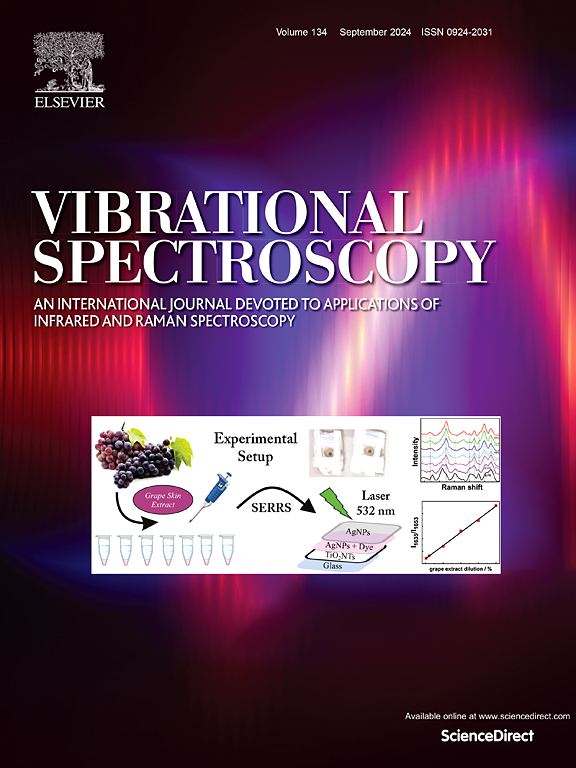Similarity based spectral data fusion physical parameter regression modeling method
IF 3.1
3区 化学
Q2 CHEMISTRY, ANALYTICAL
引用次数: 0
Abstract
Spectroscopy are widely used in routine concentration measurement. However, when spectral measurement is carried out in process industry, the measurement environment often changes thus the prediction accuracy of the regression model is spoiled. Existing studies regard the measurement environment change as noise, but in fact, the measurement environment also contains useful information. In this paper, a modeling method is proposed to augment the measured environmental parameters (physical quantities) into the calibration modeling to improve the prediction accuracy. To solve the problem of physical quantity parameters being overridden caused by direct variable extension method, we use the data fusion method based on sample similarity. Gaussian kernel function is used to calculate the similarity matrix of spectral and physical quantities respectively. Then fusion matrix is obtained by weighting combination. Finally, the regression model of fusion matrix and concentration is established by standard PLS modeling method. A regression model is established for the data collected during the fermentation process. The results showed that the prediction performance of the model could be improved by nearly 10 % by adding physical quantity information.
基于相似性的光谱数据融合物性参数回归建模方法
光谱学在常规浓度测量中有广泛的应用。然而,在过程工业中进行光谱测量时,测量环境往往会发生变化,从而影响回归模型的预测精度。现有的研究将测量环境的变化视为噪声,但实际上,测量环境中也包含着有用的信息。本文提出了一种将实测环境参数(物理量)增加到标定模型中的建模方法,以提高预测精度。为解决直接变量扩展法导致物理量参数被覆盖的问题,采用基于样本相似度的数据融合方法。利用高斯核函数分别计算谱和物理量的相似矩阵。然后通过加权组合得到融合矩阵。最后,采用标准PLS建模方法建立了融合矩阵与浓度的回归模型。对发酵过程中采集的数据建立了回归模型。结果表明,加入物理量信息后,模型的预测性能可提高近10% %。
本文章由计算机程序翻译,如有差异,请以英文原文为准。
求助全文
约1分钟内获得全文
求助全文
来源期刊

Vibrational Spectroscopy
化学-分析化学
CiteScore
4.70
自引率
4.00%
发文量
103
审稿时长
52 days
期刊介绍:
Vibrational Spectroscopy provides a vehicle for the publication of original research that focuses on vibrational spectroscopy. This covers infrared, near-infrared and Raman spectroscopies and publishes papers dealing with developments in applications, theory, techniques and instrumentation.
The topics covered by the journal include:
Sampling techniques,
Vibrational spectroscopy coupled with separation techniques,
Instrumentation (Fourier transform, conventional and laser based),
Data manipulation,
Spectra-structure correlation and group frequencies.
The application areas covered include:
Analytical chemistry,
Bio-organic and bio-inorganic chemistry,
Organic chemistry,
Inorganic chemistry,
Catalysis,
Environmental science,
Industrial chemistry,
Materials science,
Physical chemistry,
Polymer science,
Process control,
Specialized problem solving.
 求助内容:
求助内容: 应助结果提醒方式:
应助结果提醒方式:


